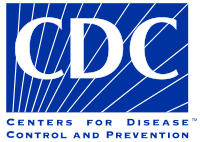
Photo from wikipedia
Background: Despite the achievements of the national program for the prevention and control of diabetes (NPPCD) over the past two decades, the available evidence indicates a high prevalence of this… Click to show full abstract
Background: Despite the achievements of the national program for the prevention and control of diabetes (NPPCD) over the past two decades, the available evidence indicates a high prevalence of this disease in Iran. This qualitative study aims to investigate barriers to the NPPCD by pursuing the perspectives of relevant policy-makers, planners, and healthcare workers. Methods: A grounded theory approach was used to analyze participants’ perceptions and experiences. Semi-structured interviews (n=23) and eight focus groups (n=109) were conducted with relevant policy-makers, planners, and healthcare workers in charge of Iran’s national diabetes management program. Of the 132 participants, ages ranged from 25 to 56 years, and 53% were female. Constant comparative analysis of the data was conducted manually, and open, axial, and selective coding was applied to the data. Results: Two main themes emerged from data analysis: implementation barriers and inefficient policy-making/ planning. Insufficient financial resources, staff shortage and insufficient motivation, inadequate knowledge of some healthcare workers, and defects in the referral system were recognized as the NPPCD implementation barriers. Inappropriate program prioritizing, the lack of or poor intersectoral collaboration, and the lack of an effective evaluation system were the inefficient policy-making/planning problems. Conclusion: Current results highlighted that inefficient policy-making and planning have led to several implementation problems. Moreover, the key strategies to promote this program are prioritizing the NPPCD, practical intersectoral collaboration, and utilizing a more efficient evaluation system to assess the program and staff performance.
Journal Title: International Journal of Health Policy and Management
Year Published: 2022
Link to full text (if available)
Share on Social Media: Sign Up to like & get
recommendations!